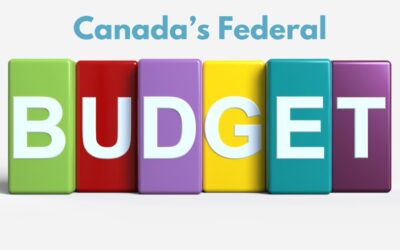With this current economic stress on the Canadian economy, the Canada Mortgage Housing Corporation (CMHC) which insures mortgage defaults for homeowners with a down payment of less than 20% of the house purchase price, has introduced stricter guidelines for the situations that they’ll insure. CMHC is only one of Canada’s mortgage insurers, but is the largest and the one who sets a best practice. (Genworth Financial and Canada Guaranty are the others, who have NOT changed their approval criteria yet.)
The new guidelines which are effective July 1, 2020, are designed to protect home buyers given the financial conditions facing many Canadians right now. And I’m not just talking about the economic downturn related to the pandemic. I’m talking about the record breaking levels of non-mortgage debt Canadian’s held prior to COVID-19.
With credit so “cheap” the last decade and encouragement for consumers to spur the Canadian economy, Canadians have been carrying an average consumer debt of approximately $72, 950 (as per Equifax Canada at end of 2019). As a result of these conditions, CMHC is requiring that down payment funds come directly from the homebuyer, not borrowed, and that there be less debt carried by the mortgage applicant than previous criteria indicated.
Why you ask?
CMHC is looking out for consumers getting into the housing market who are already carrying too much debt, who may then add to that debt in order to make the down payment, and then as interest rates rise (because that’s the only place for them to go), the homeowner can no longer afford to carry their mortgage and non-mortgage debt, resulting in a default and CMHC insurance then kicking in to make the mortgage lender whole.
Something similar to that above scenario happened to cause the US housing crisis a decade ago, where interest rates rose and homeowners who barely (or wouldn’t) qualify for a mortgage defaulted because they couldn’t afford the increased payment.
What’s the underlying root of these changes?
As mentioned above, these stem from the high level of Canadian household non-mortgage debt, and the fact that interest rates remain low in order to spur the economy. The problem is that there are also a record number of people under water, living paycheque to paycheque only because so much of their earnings goes towards servicing their debt.
Canadians’ financial position became quite clear when, with the pandemic having to close down so many businesses and put people temporarily out of work (and a paycheque), millions of Canadians could barely survive 2 weeks without an income. Again, living paycheque to paycheque.
This is not all a result of the debt that Canadians carry, as housing expenses in many parts of the country are also far outpacing the income of those residing in the area, but debt becomes a cashflow utility to help when regular living expenses match or exceed one’s income. That credit card or line of credit becomes the cashflow cushion until it gets to the point of being more and more difficult to bring back to $0 because of other unexpected expenses, a lack of emergency savings, and high interest rates.
Think about it…
If you have any debt, think about your own financial circumstances. What would you do with the money you put towards eliminating, or simply servicing the debt you carry month over month? If you’re putting an average of $250 per month (which is low based on an average of debt-carrying clients I work with) toward servicing your debt, that’s $3000 annually. What could YOU purchase with that kind of money? A week’s vacation at an all-inclusive?
The reality check
Whether you’re in the market for a mortgage or not this year, take a good hard look at your finances and in particular, your debt, and devise a strict policy to not just reduce but eliminate that debt. This is the perfect time for many to do that with so many discretionary expenditures obsolete. There aren’t restaurants and bars to frequent in the same way. No concerts, shows, or sports games to go see. All of those savings can be redirected to the elimination of debt, and should be a priority above any other expenses such as online shopping or non-essential home improvements.
Set clear priorities and make it happen.
_____________
For insight on the Niagara housing market and recession, read Naomi Knight’s blog post, “Niagara & the ‘Historic Recession”
For more about Canadians’ debt, read this article from BNN Bloomberg, “50% of Canadians face insolvency amid ‘debt hopelessness’: Survey”





0 Comments